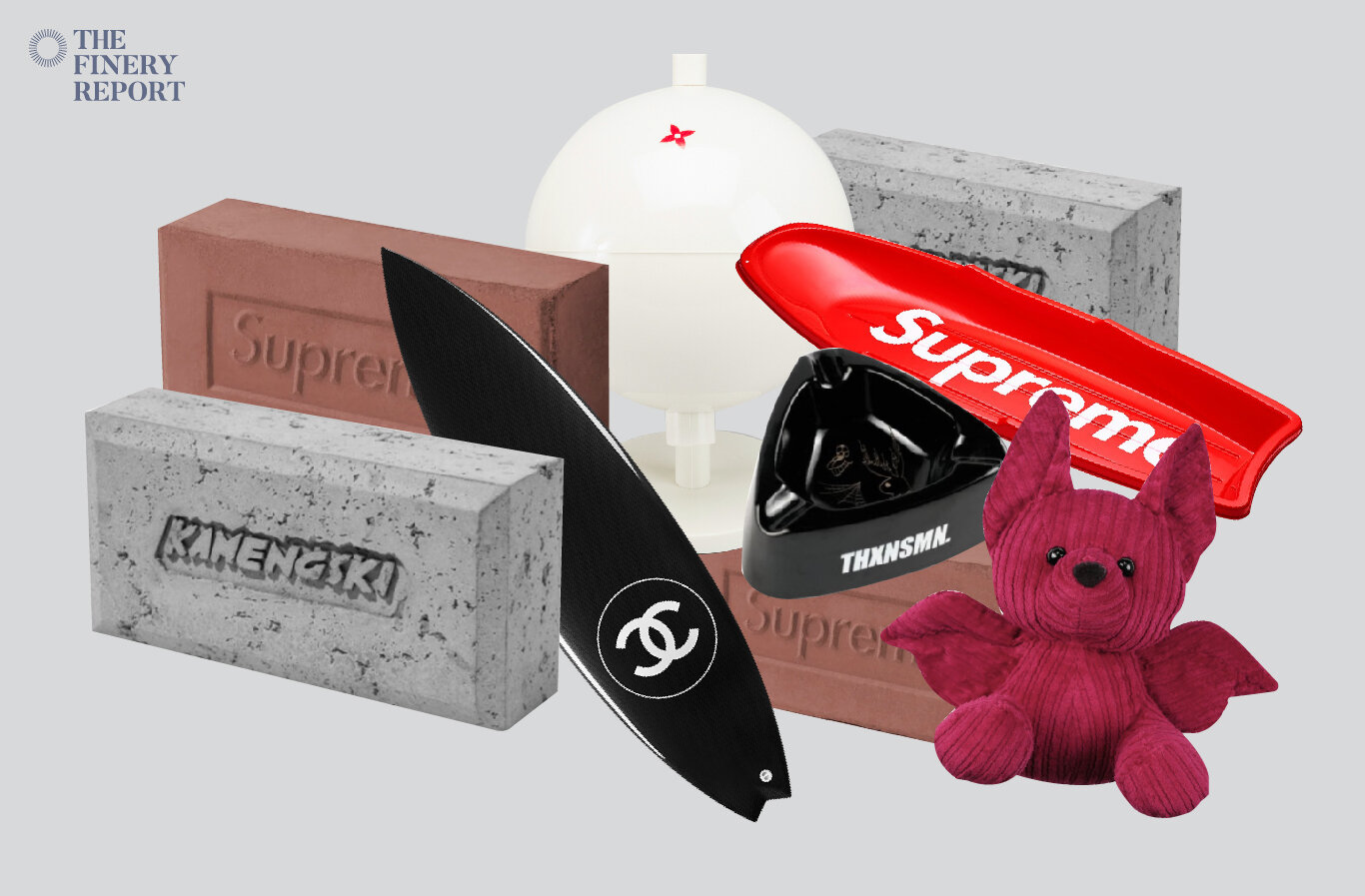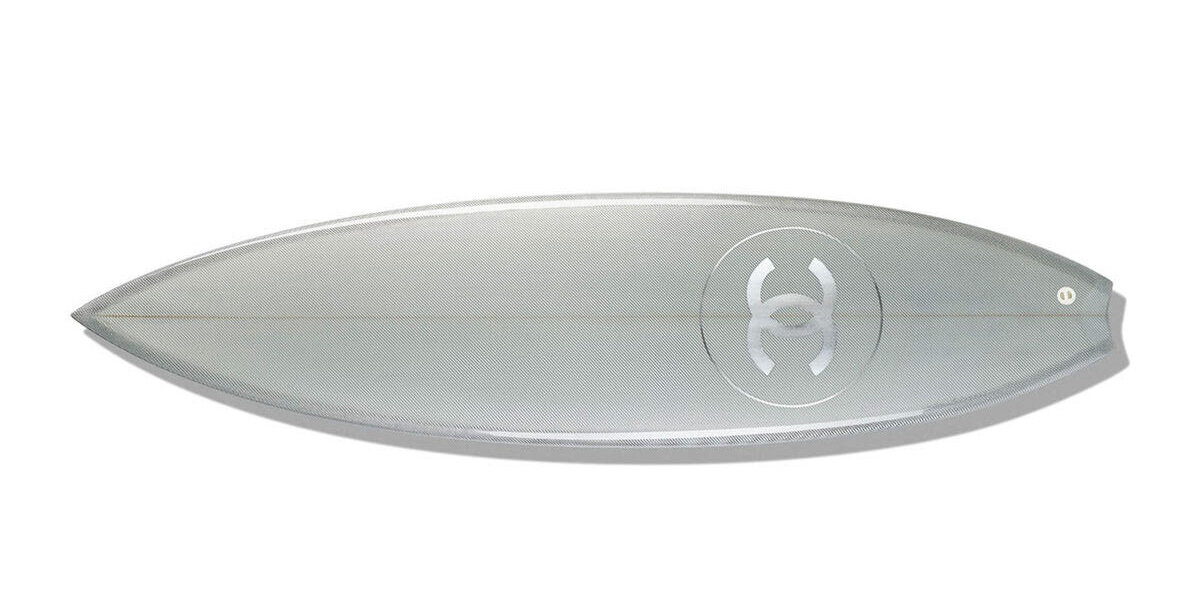Why do brands sell 'gimmicky' items?
Read in Indonesian
Back in 2014, Louis Vuitton released a $175,000 punching bag designed by the late Karl Lagerfeld, while Chanel in 2019 released $7,700 surfboards. Other fashion brands, such as Supreme, are synonymous with releasing novelty items. In addition to the Cash Cannon, Supreme has the infamous red clay brick which carried a retail price of $30 - the bricks are now available on eBay for $1,000.
Selling novelty items is nothing out of the ordinary; this business line has been flourishing over the years. It is the “type” of items that are out of the ordinary and become a hype. In the realm of fashion, these novelty items are categorised as “tchotchke”, a Yiddish term that refers to trinkets or miscellaneous items.
Euromonitor International revealed that trinkets and novelty products are a rapidly growing global market. Sales of small leather goods stood at over $3 billion by 2008 and rose to over $5 billion in 2014 and $5.7 billion in 2015. The segment is projected to grow to $6.5 billion by 2018 and $7.5 billion by 2020.
Head of Luxury Goods at Euromonitor International Fflur Roberts said, “The last five years has seen many luxury brands expand their portfolios and diversify into new territory, but the latest in these innovations is the increase in brand tchotchkes by leading luxury labels.”
Image: Chanel surfboard
Today, luxury brands no longer sell products just based on familiarity and niche. It’s not so much about selling their brands; in this wave of consumer expectations, values trend. Brands have to think out of the box and curate items as a way to move into a cultural era. Staying true to their DNA is still the essence and it is the main reason why these products are doing outstandingly well in terms of sales.
Take, for example, Fendi’s Bag Bugs launched in 2013 (priced at $344-$600), Fendi’s “Karlito” which resembled the then creative director Karl Lagerfeld, as well as Burberry’s Thomas Teddy Bear that bears the brand’s signature check (priced at $588 and $33).
These luxury items are sold at an entry-level price range to attract consumers who don’t have the money to afford designer bags and apparel. Keeping the prices at such a bracket is key to maintaining the brand’s image. This way, they can build loyalty among wannabe luxury goods buyers.
Tchotchke is a way to boost the brand’s revenue and expand its consumer demographics. Their price range and forms allow these products to sell fast and trending among younger consumers. In addition to being useful, tchotchke has unique appeal and playfulness that allow them to stand out against typical luxury handbags, clothes and shoes.
Tchotchke also comes in diverse designs, making them more “personalised”. This way, customers invest in newness. They may not buy the more sober items or couture pieces, but at both psychological and emotional levels, they have the sense of belonging; of being a part of the brand.
One brand that does exceptionally well in this category is New York streetwear label Supreme. In the midst of a hype-driven purchasing trend, Supreme’s novelty items always go viral and are sought after by long-time collectors and hyper-focused consumers. The brand has released some unusual items, such as a fire extinguisher, anatomy model, nunchucks and, its most prolific yet, a big red clay brick.
Although many of Supreme’s tchotchkes are useless and bizarre, people would camp outside the stores and line up for hours in hopes of spending anywhere between $30 and $1,000 on them.
Dr. Henrik Hagtvedt, a marketing professor at Boston College who specialises in experiential consumer behaviour, said, “There’s some sense that [the consumer] is partaking in something extraordinary- something that goes beyond the strictly functional.” The desired outcome for these brands is being a part of the cultural anomaly.
Indonesian design studio/art club KAMENGSKI has also dived into the realm of novelty items. “We like to explore and create using different media because we don’t want to be limited to just selling apparel,” the brand said. Some of their items do have a strong background story -a concept and narrative-, while some are solely created for fun.
Tapping into a deep-rooted mission of raising awareness of sustainability, KAMENGSKI launched bricks made of concrete and cigarette butts. “We worked with Conture Concrete Lab. They specialise in producing items made of concrete. We collaborate with Parongpong, which receives 14 tons of leftover cigarettes in a month from Sampoerna. They were asked to recycle and process the cigarette butts into new materials. They discovered that processed cigarette butts have similar characteristics to fibres that are used in construction materials.”
Albeit exciting, the Indonesian market still shrugs off the local brands’ venture into the novelty category. ThanksInsomnia founder Mohan Hazian explained, “From a creative point of view, it is interesting. But if you look from the lens of the brand, because it is purely gimmicked, the profits we receive are not substantial enough.” However, it does create some sensation: people are talking about those products due to their oddity.
Luxury brands are known to be ultra-competitive, and to stay competitive, they must keep up with what’s trending and what consumers are seeking. They must look beyond a single line of aesthetics. Handbags with the same style can be monotonous. This is where curated novelty products come in; they go beyond pulling in the generic customers. And despite their expensive price, customers still want novelty items for their playful quality and the fun offered by high fashion pieces.
When the risk of brand dilution is high, fashion houses present their lighthearted side that many don’t expect. Today, many creative directors are less about being couturiers and more about being people who generate innovative, unexpected ideas.














